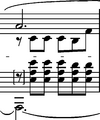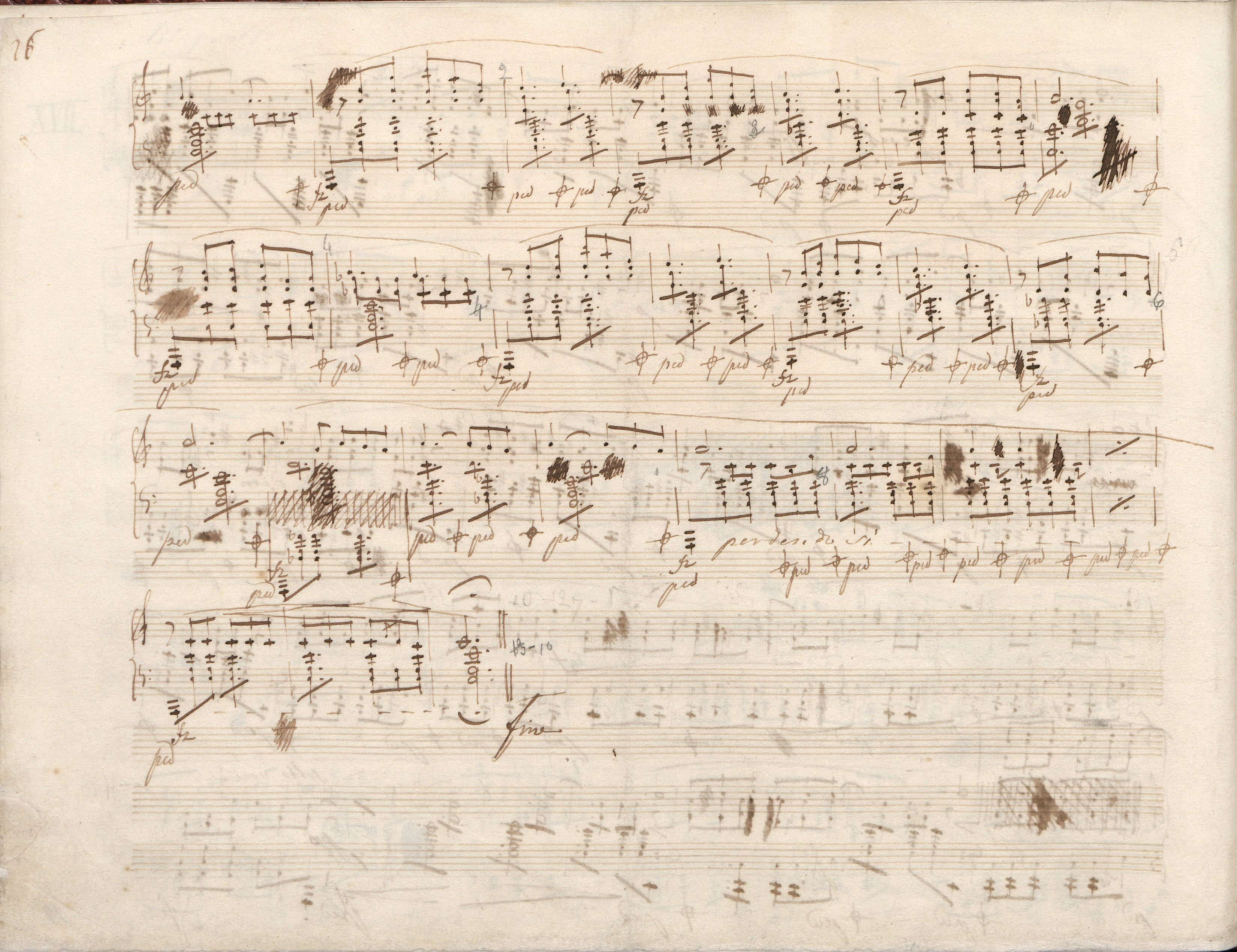Op. 2, Variations in B♭ major
Op. 10, 12 Etudes
Op. 11, Concerto in E minor
Op. 21, Concerto in F minor
Op. 22, Polonaise in E♭ major
Op. 24, 4 Mazurkas
Op. 25, 12 Etudes
Op. 26, 2 Polonaises
Op. 27, 2 Nocturnes
Op. 28, 24 Preludes
Op. 30, 4 Mazurkas
Op. 35, Sonata in B♭ minor
Op. 50, 3 Mazurkas
Op. 63, 3 Mazurkas
Op. 64, 3 Waltzes
(Op. 4), Sonata in C minor




Op. 28 No. 17, Prelude in A♭ major

|
Rests in FCI, literal interpretation |
|
|
|
c1 & chord in FCI (contextual interpretation) & remaining sources |
In FCI this bar is marked as a repetition of the previous one (•/•). When interpreted literally, it would mean including the bass A 1 at the beginning of the bar, which contradicts the notation of the copy, since A
1 at the beginning of the bar, which contradicts the notation of the copy, since A 1 from b. 84 is tied to this bar and further on, to the end of the piece. Assuming that the elements written in addition to the repeat sign are to supplement or change the notation of the repeated model, we get the first of the given interpretations, in which we fill the missing 1st L.H. quaver with a rest, after the bottom R.H. voice. However, according to us, repeat signs require a more flexible approach here, and according to Chopin the bar was supposed to look like the one in the final version.
1 from b. 84 is tied to this bar and further on, to the end of the piece. Assuming that the elements written in addition to the repeat sign are to supplement or change the notation of the repeated model, we get the first of the given interpretations, in which we fill the missing 1st L.H. quaver with a rest, after the bottom R.H. voice. However, according to us, repeat signs require a more flexible approach here, and according to Chopin the bar was supposed to look like the one in the final version.
Compare the passage in the sources »
category imprint: Interpretations within context; Differences between sources
notation: Rhythm

